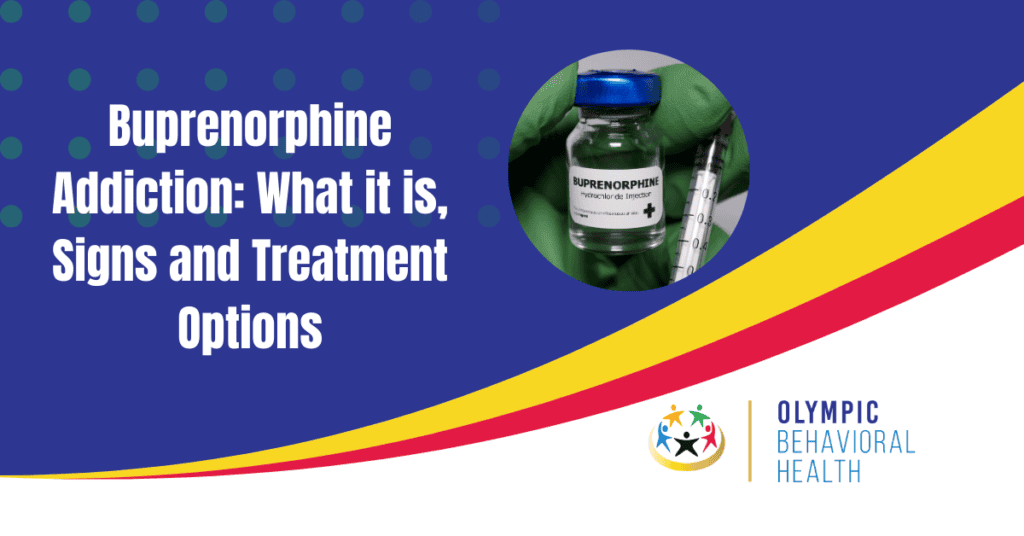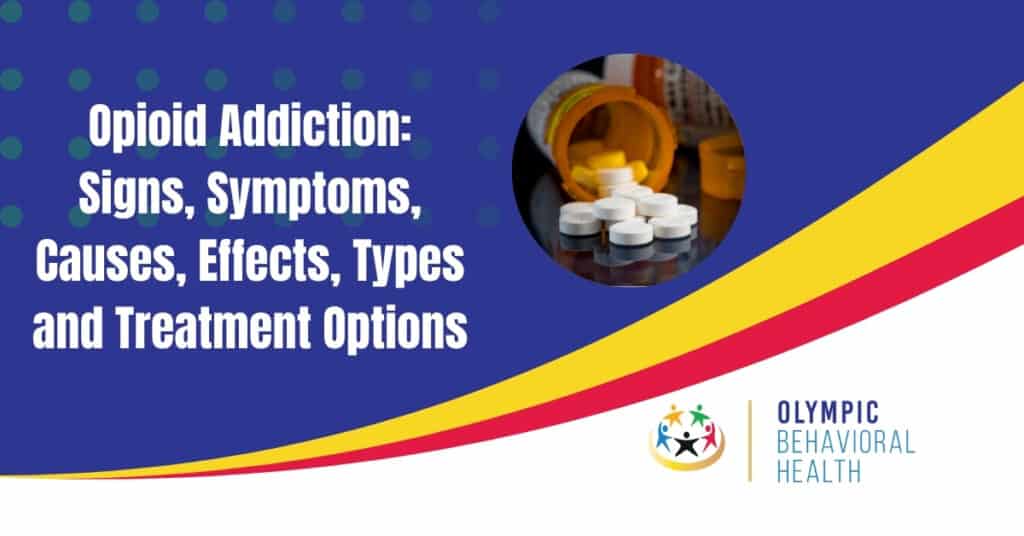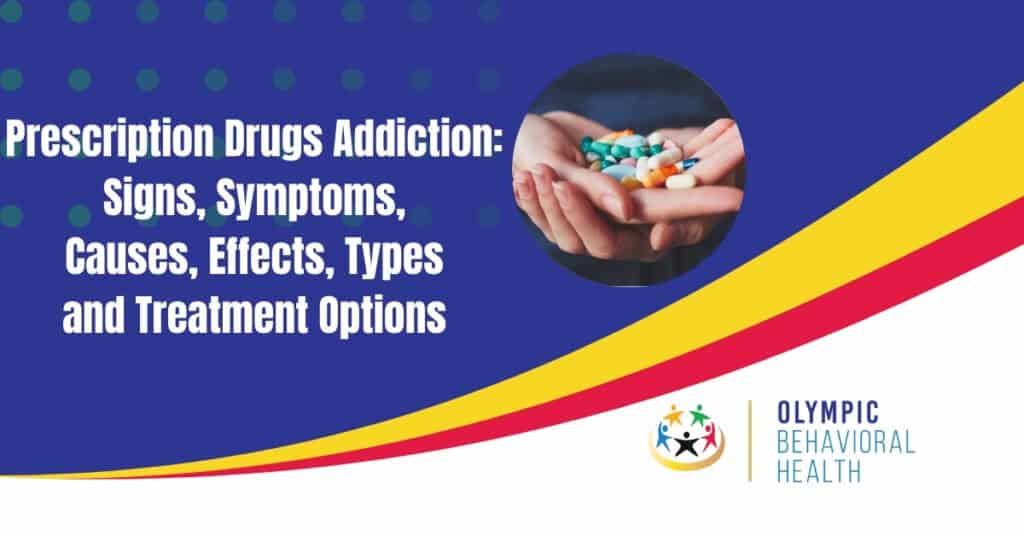What is Buprenorphine Addiction?
Buprenorphine addiction is a serious issue that affects many individuals. Here are some important points to consider:
- Buprenorphine is a medication used to treat opioid addiction. It works by binding to the same receptors in the brain as other opioids, reducing cravings and withdrawal symptoms. However, buprenorphine can be addictive if not taken as prescribed.
- Addiction to buprenorphine can occur when individuals misuse or take higher doses than prescribed. This can lead to physical and psychological dependence, as well as cravings for the drug.
- Buprenorphine addiction is not a failure of the individual but a complex interaction between the drug and the brain. Genetic predisposition, environmental influences, and previous substance abuse history can also contribute to addiction.
- Recognizing the signs of buprenorphine addiction is crucial. Signs may include increased tolerance, cravings, continued use despite negative consequences, and withdrawal symptoms.
- Seeking professional help is the most effective way to address buprenorphine addiction. Treatment options may include medication-assisted therapy, counseling, and support groups. It’s important to work with experienced healthcare professionals.
Pro-tip: Recovery is possible for those struggling with buprenorphine addiction. Reach out for help and support from healthcare professionals and loved ones. Remember, you are not alone, and resources are available to support your recovery.
What is Buprenorphine?
Buprenorphine is a medication used to treat opioid addiction. So, what is Buprenorphine exactly? It activates opioid receptors in the brain, but to a lesser extent than heroin or oxycodone. This helps manage withdrawal symptoms and cravings during recovery.
Buprenorphine has a ceiling effect, meaning increasing the dosage does not make it stronger. This makes it safer than other opioids, reducing the risk of respiratory depression and overdose.
Another advantage of Buprenorphine is its long duration of action, requiring only once-daily administration. This is convenient for individuals in treatment and lowers the risk of missed doses.
It is important to use Buprenorphine under medical supervision as part of a comprehensive treatment program. It is not a stand-alone solution for opioid addiction but can be used with counseling, therapy, and support services.
Possible side effects of Buprenorphine include constipation, nausea, headache, insomnia, and sweating. However, these side effects are generally mild and well-tolerated.
Buprenorphine addiction develops as gradually as a snail on sedatives, creeping up on unsuspecting users like a bad magic trick.
How Does Buprenorphine Addiction Develop?
Buprenorphine addiction develops due to various factors that contribute to its addictive properties. Understanding the development of buprenorphine addiction is crucial for effective intervention. Here are the key factors involved:
1. Pharmacological properties: Buprenorphine, a potent opioid medication used for pain management and treating opioid addiction, binds to brain opioid receptors, providing pain relief. However, its high potency and long-lasting effects increase the risk of misuse and addiction.
2. Tolerance and dependence: Regular use of buprenorphine leads to tolerance, requiring higher doses for the same effects. Continued use also results in physical dependence, leading to withdrawal symptoms upon abrupt discontinuation.
3. Psychological factors: Buprenorphine addiction can develop due to various psychological reasons. Some individuals may use it to cope with stress, emotional pain, or self-medicate for mental health issues.
4. Co-occurring disorders: Many individuals with buprenorphine addiction also have underlying mental health disorders, such as depression, anxiety, or post-traumatic stress disorder (PTSD). These disorders contribute to the development and maintenance of addiction.
5. Environmental factors: Environmental influences, such as peer pressure, drug-using environments, easy access to buprenorphine, and lack of supportive social networks, play a significant role in the initiation and progression of addiction.
6. Genetic predisposition: Certain genetic factors increase an individual’s vulnerability to buprenorphine addiction. Genetic variations in brain reward pathways and drug metabolism can influence the likelihood of addiction.
It is important to note that not everyone who uses buprenorphine will develop an addiction. However, understanding the factors involved in its development can guide the development of prevention and treatment strategies for this growing concern.
Side Effects of Buprenorphine
Get ready to uncover the intriguing world of buprenorphine as we dive into the section dedicated to its side effects. Discover the common and serious side effects that can come along with the use of buprenorphine. Brace yourself for a rollercoaster ride of information, where we’ll explore the facts, figures, and real-life events related to these side effects. It’s time to shed light on the potential consequences and make informed decisions about buprenorphine usage. Let’s dig in!
Common Side Effects of Buprenorphine
When using buprenorphine, it’s important to be aware of the potential side effects.
The common side effects of buprenorphine include nausea, headache, constipation, dizziness, excessive sweating, insomnia, fatigue, muscle aches, anxiety, and depression.
These side effects affect varying percentages of patients, ranging from 2% to 12%.
It’s worth noting that not everyone will experience these side effects, and their severity can differ.
If you’re considering or already taking buprenorphine and experiencing any side effects, it’s advisable to consult with your healthcare provider to adjust your treatment plan accordingly.
Serious Side Effects of Buprenorphine
Serious Side Effects of Buprenorphine
Buprenorphine treats opioid addiction. However, it has serious side effects. Here are the details:
1. Respiratory depression: Buprenorphine can slow breathing. This is dangerous, especially when combined with alcohol or benzodiazepines.
2. Allergic reactions: Some people have mild to severe allergic reactions to buprenorphine. Symptoms include hives, swelling, difficulty breathing, and even life-threatening anaphylaxis.
3. Liver problems: High doses or long-term use of buprenorphine can damage the liver. Symptoms may include yellowing of the skin or eyes, dark urine, and abdominal pain.
4. Hormonal disturbances: Buprenorphine affects hormone levels. This can cause decreased libido, irregular menstrual cycles, and reduced fertility in men and women.
5. Withdrawal symptoms: Buprenorphine can alleviate withdrawal symptoms, but it can also cause its own withdrawal symptoms if stopped suddenly. Symptoms include nausea, vomiting, muscle aches, and intense cravings for opioids.
Not everyone will have these side effects. The benefits of buprenorphine in addiction treatment usually outweigh the risks. However, it is important to be aware of these complications and discuss any concerns with a healthcare provider. Regular monitoring and communication with medical professionals ensure the safe and effective use of buprenorphine in addiction treatment.
Recognizing Addiction to Buprenorphine
Recognizing addiction to buprenorphine is crucial for effective intervention and support. In this section, we will delve into the signs and symptoms that may indicate a person’s addiction to buprenorphine. Additionally, we will explore the physical and psychological effects associated with this addiction. By understanding these factors, individuals and communities can better address the challenges posed by buprenorphine addiction and work towards effective recovery.
Signs and Symptoms of Buprenorphine Addiction
If you or someone you know exhibits these signs and symptoms of buprenorphine addiction, it is crucial to seek professional help.
Buprenorphine addiction causes individuals to need higher doses over time to achieve the same effects, leading to increased tolerance. When addicted individuals try to stop using buprenorphine, they experience severe withdrawal symptoms like nausea, sweating, anxiety, muscle aches, and insomnia.
People with buprenorphine addiction engage in compulsive behaviors to obtain the drug, such as visiting multiple doctors or pharmacies or engaging in illegal activities. Buprenorphine addiction also leads to a decline in personal and professional responsibilities, with individuals neglecting work, school, family, and social relationships for drug use.
It causes significant physical changes like weight loss, flu-like symptoms, and poor hygiene, as well as psychological changes including mood swings, irritability, anxiety, and depression. Those struggling with buprenorphine addiction isolate themselves and engage in secretive behavior to hide their drug use, withdrawing from social activities and spending excessive time with other drug users.
Additionally, buprenorphine addiction can cause financial strain as individuals spend excessive money on the drug, neglecting essential expenses like bills and groceries. Treatment options such as detoxification, inpatient rehabilitation, outpatient treatment, counseling, and therapy support recovery. Reach out to healthcare professionals, addiction specialists, or helpline services for guidance and support.
Seeking help is the first step towards regaining control and achieving long-term recovery.
From physical cravings to psychological distress, the effects of buprenorphine addiction will make you question if there’s a sub way out.
Physical and Psychological Effects of Buprenorphine Addiction
Buprenorphine addiction can have significant physical and psychological effects. It is crucial to understand the impact of this addiction in order to recognize its severity and seek appropriate treatment. Here are the physical and psychological effects of buprenorphine addiction:
1. Physical effects:
– When addicted individuals stop using buprenorphine, they may experience withdrawal symptoms such as nausea, vomiting, diarrhea, muscle aches, and insomnia.
– Buprenorphine can depress the respiratory system, leading to slowed breathing or respiratory failure, which can be life-threatening.
– Buprenorphine addiction can disrupt hormone production and regulation, resulting in decreased libido, fertility problems, and irregular menstrual cycles.
– Digestive issues, constipation, and stomach pain are some of the gastrointestinal problems associated with buprenorphine abuse.
2. Psychological effects:
– Buprenorphine addiction can cause mood swings, irritability, anxiety, or depression.
– Prolonged use of buprenorphine can impair cognitive functions such as memory, attention span, and decision-making abilities.
– Buprenorphine addiction can strain relationships, isolate individuals, and make it difficult to maintain social connections.
– Individuals addicted to buprenorphine may develop a strong psychological dependency on the drug, feeling unable to function without it.
In order to minimize these physical and psychological effects, it is crucial to seek appropriate treatment for buprenorphine addiction. Detoxification, inpatient rehabilitation, outpatient treatment, and counseling therapies are effective options for addressing this addiction. Additionally, safe prescription practices and educational programs can help prevent buprenorphine addiction.
If you or someone you know is struggling with buprenorphine addiction, it is important to seek professional help and support. Recovery is possible, and treatment can greatly improve physical and psychological well-being.
Treatment Options for Buprenorphine Addiction
Seeking effective treatment options is crucial when dealing with buprenorphine addiction. In this section, we will explore various approaches that can help individuals overcome this addiction and regain control of their lives. From detoxification to inpatient rehabilitation, outpatient treatment, and counseling and therapy, we will delve into the different sub-sections that offer hope, guidance, and support on the journey to recovery. Let’s uncover the pathways to a healthier, addiction-free future.
Detoxification
Detoxification is vital in treating buprenorphine addiction. It cleanses the body of the drug and manages withdrawal symptoms. Common methods for detoxification include:
1. Medical: This method involves using medications to gradually reduce buprenorphine dosage and manage withdrawal symptoms. Medications like clonidine and buprenorphine/naloxone combination can be used.
2. Inpatient: Inpatient programs provide round-the-clock medical support for severe addiction or co-occurring health issues. Close monitoring and adjustment of the detoxification process are possible in this setting.
3. Outpatient: Suitable for mild to moderate addiction with a strong support system at home. Regular visits to a healthcare provider for medication management and support are involved.
4. Counseling and Therapy: These are vital elements of the detoxification process. They address underlying causes of addiction, develop coping mechanisms, and teach relapse prevention strategies. Individual counseling, group therapy, and cognitive-behavioral therapy (CBT) may be used.
Detoxification alone does not achieve long-term recovery from buprenorphine addiction. It should be followed by inpatient rehabilitation, outpatient treatment, or counseling and therapy. These additional interventions help address psychological and behavioral aspects of addiction and cultivate a drug-free lifestyle.
Inpatient Rehabilitation
Inpatient rehabilitation is a highly effective treatment option for those struggling with buprenorphine addiction. This type of treatment provides intensive care within a residential setting, allowing individuals to fully focus on their recovery journey. There are several key aspects to consider when opting for inpatient rehabilitation:
1. Inpatient environment: Individuals receive round-the-clock care in a safe and supportive facility that is solely dedicated to their well-being.
2. Medical supervision: Addiction medicine specialists closely monitor the progress of each individual, effectively manage withdrawal symptoms, and address any medical concerns that may arise.
3. Individual and group therapy: Inpatient rehabilitation programs offer a combination of one-on-one counseling and group therapy sessions. These therapeutic approaches aim to delve into the underlying causes of addiction, teach essential coping skills, and foster a supportive network with peers.
4. Holistic approach: Apart from therapy, holistic treatments such as mindfulness practices, yoga, and art therapy are integrated into the program. These practices promote stress management and overall well-being, enhancing the recovery process.
5. Length of stay: The duration of inpatient rehabilitation typically ranges from 30 to 90 days. This allows sufficient time for comprehensive treatment and the establishment of a solid foundation for long-term recovery.
Here’s a pro-tip: It is essential to carefully choose an inpatient rehabilitation program that suits your specific needs. Factors to consider include the location of the facility, the treatment approach utilized, the credentials of the staff, as well as the availability of aftercare support. By making an informed decision and investing in inpatient rehabilitation, individuals can successfully overcome their buprenorphine addiction and achieve long-term sobriety.
Outpatient Treatment
Outpatient treatment is a highly viable option for individuals struggling with buprenorphine addiction. It offers the flexibility needed to receive necessary care while still managing daily responsibilities. When considering outpatient treatment for buprenorphine addiction, there are several key points to keep in mind:
1. Accessibility: Outpatient treatment is easily accessible as it does not require a residential stay. This means individuals can receive treatment from the comfort of their own homes while maintaining their regular routines.
2. Treatment Programs: Outpatient treatment programs come in various intensities and durations. These programs typically include individual counseling, group therapy, educational sessions, and regular medical check-ups. The focus is always on meeting each individual’s specific needs.
3. Flexibility: One of the major advantages of outpatient treatment is the flexibility it offers in terms of scheduling appointments and sessions. This enables individuals to attend treatment while still fulfilling their work, education, and family commitments.
4. Support Network: Outpatient treatment strongly encourages the involvement of family and friends in the recovery process. This external support system plays a vital role in providing emotional support and encouragement.
5. Continued Care: Outpatient treatment provides ongoing care and support even after the initial program is completed. This is crucial in maintaining sobriety and preventing relapse.
6. Lifestyle Integration: Outpatient treatment focuses on promoting healthy coping mechanisms and positive lifestyle changes. It helps individuals integrate recovery practices into their daily lives in a sustainable way.
7. Cost-Effective: Compared to inpatient or residential programs, outpatient treatment is generally more affordable. This makes it a more accessible option for many people seeking treatment.
Pro-tip: When considering outpatient treatment for buprenorphine addiction, it is important to choose a program that aligns with your specific needs and preferences. Active engagement in treatment, attending all scheduled sessions, and following guidance from healthcare professionals are key to maximizing the effectiveness of outpatient treatment. Remember, with dedication and openness to change, outpatient treatment can bring about significant positive changes in one’s life.
Counseling and Therapy: Because sometimes you just need someone to nod empathetically while you rant about your buprenorphine addiction.
Counseling and Therapy
Counseling and therapy are essential for treating buprenorphine addiction. Addiction is a complex issue, and addressing the psychological and emotional aspects is as important as the physical effects.
1. Counseling and therapy: Counseling and therapy help individuals with buprenorphine addiction. They allow them to explore the root causes, identify triggers, and develop healthy coping mechanisms. Counseling and therapy can be done with a therapist or in group settings for support.
2. Behavioral therapy and counseling: Behavioral therapy and counseling are important for treating buprenorphine addiction. They focus on changing harmful behaviors with healthier ones. Techniques like cognitive-behavioral therapy are used to identify and change negative thought patterns and behaviors associated with addiction.
3. Support groups and counseling: Support groups and counseling are beneficial for individuals with buprenorphine addiction. They provide a safe space to share experiences, receive guidance, and build a support network. Groups like Narcotics Anonymous connect individuals in similar situations for valuable insights and encouragement.
4. Family therapy and counseling: Involving family members in counseling and therapy is valuable. It addresses any dysfunction within the family system contributing to addiction. It helps families understand addiction, support their loved one’s recovery, and mend relationships.
Counseling and therapy are vital for overcoming buprenorphine addiction. Seeking help from experienced therapists and addiction specialists is essential to tailor treatment plans. Through counseling and therapy, individuals develop the skills to maintain sobriety, address underlying issues, and cultivate a healthier and more fulfilling life.
Preventing Buprenorphine Addiction: Because a one-liner a day keeps the addiction away.
Preventing Buprenorphine Addiction
Buprenorphine addiction is a serious concern that demands our attention. In this section, we will explore effective strategies for preventing this addiction. From safe prescription practices to educational programs and community support, we’ll uncover the key elements that play a vital role in tackling this issue head-on. So, let’s delve into the world of prevention and discover how we can safeguard individuals from the harmful effects of buprenorphine addiction.
Safe Prescription Practices
Safe Prescription Practices are essential for the use of buprenorphine to prevent addiction and ensure effective treatment. Here are some important considerations to keep in mind:
- Lawful prescriptions: Buprenorphine should only be prescribed by qualified healthcare professionals who are authorized. This helps ensure appropriate and justified prescribing.
- Accurate patient assessment: Before prescribing buprenorphine, healthcare providers should thoroughly assess the patient’s medical history, medications, and potential contraindications. This minimizes the risk of adverse effects and drug interactions.
- Individualized treatment plans: Each patient’s treatment plan should be tailored to their specific needs. Factors such as addiction severity, co-occurring disorders, and overall health should be considered when determining dosage and duration of treatment.
- Proper dosing and administration: Healthcare providers should prescribe buprenorphine at the lowest effective dose to minimize dependence and misuse. Patients should be educated on correct dosage and administration methods.
- Regular monitoring: Follow-up appointments should be scheduled to monitor the patient’s progress, assess treatment response, and make dosage adjustments if needed. This ensures the medication is working effectively and identifies early concerns.
Implementing safe prescription practices significantly reduces the risk of buprenorphine addiction and enhances treatment safety and effectiveness. By following these practices, healthcare providers play a crucial role in supporting patients’ recovery.
Fact: In a study published in the Journal of Addiction Medicine, safe prescribing practices for buprenorphine were found to significantly reduce diversion and misuse of the medication.
Educational Programs and Community Support
Educational programs and community support are crucial for addressing buprenorphine addiction. These initiatives play a significant role in raising awareness, providing resources, and offering support to individuals affected by addiction. Consider the following aspects to ensure their effectiveness:
1. Education on buprenorphine addiction: These programs offer accurate information about the addiction, its causes, and treatment options. The knowledge gained through these programs helps individuals understand the risks associated with addiction and the importance of seeking help.
2. Raising awareness: Community initiatives aim to reduce stigma surrounding addiction and increase awareness about it. By organizing events, workshops, and campaigns, these initiatives inform people about the signs, available resources, and how to support individuals affected by addiction.
3. Peer support groups: Groups provide a safe space for individuals to share their experiences, challenges, and successes. Participating in these groups fosters a sense of belonging and allows participants to learn from one another.
4. Counseling and therapy services: Access to professional services is essential in helping individuals address underlying issues, develop coping mechanisms, and acquire essential life skills for long-term recovery.
5. Community resources and referrals: It is important to provide individuals with information about local resources, such as detoxification centers, rehabilitation facilities, outpatient treatment programs, and healthcare professionals specializing in addiction medicine. Additionally, connecting individuals with social services, housing, and employment support can greatly contribute to their recovery journey.
6. Family and caregiver support: Educational programs and community support should also extend their resources and guidance to loved ones. This includes helping them understand addiction, teaching them approaches to support recovery, and providing self-care strategies.
To maximize the impact of these programs and support, continuous assessment and improvements are necessary. Strengthening collaboration between healthcare providers, community organizations, and educational institutions ensures comprehensive support for successful recovery from buprenorphine addiction. Together, we can create a supportive environment that promotes healing and empowers individuals to overcome addiction.

Share This Post



